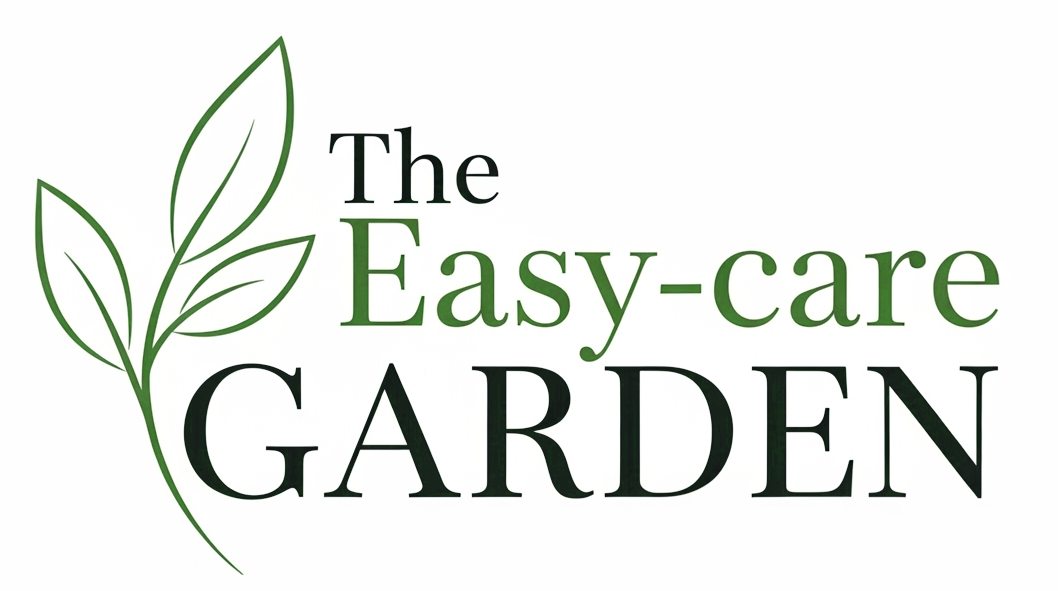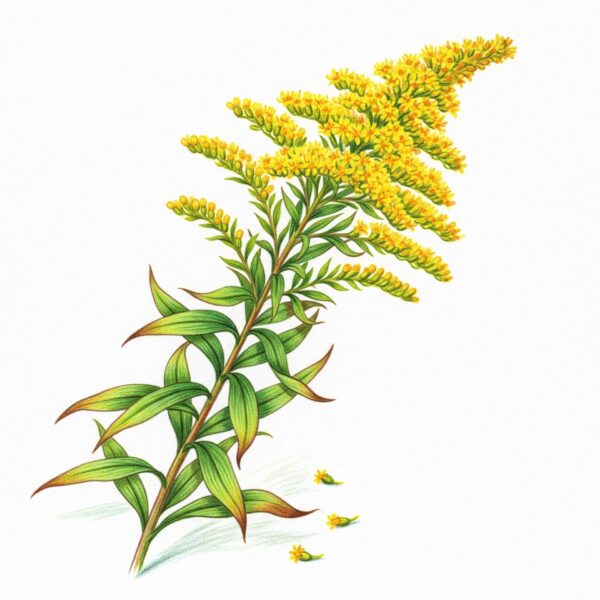Goldenrod (Solidago genus) is a familiar perennial plant in the UK, easily recognised by its tall, dense plumes of bright yellow flowers that bloom from late summer into autumn. While it is a valuable nectar source for late-season pollinators, its presence in the UK is a complex story of both native and introduced species.
Description
Native vs. Non-Native Species:
The UK’s flora includes a single native species, which is often overshadowed by more vigorous North American introductions.
Solidago virgaurea (European Goldenrod): This is the UK’s native species. It is typically a smaller, more delicate plant, growing to about 1 meter in height. It is a scarce plant found in specific habitats, such as woodland edges, heaths, and rocky grasslands, particularly in western parts of the UK.
Solidago canadensis (Canadian Goldenrod) and Solidago gigantea (Early Goldenrod): These are North American species that were introduced to the UK as ornamental plants. They are much taller and more aggressive, with the potential to spread rapidly via both rhizomes and wind-borne seeds. They are considered invasive in many areas, outcompeting native plants and forming dense colonies, especially in disturbed habitats like roadsides, railway verges, and waste ground.
Key Characteristics:
- Flowers: The most striking feature is the dense cluster of tiny, bright yellow flowers. These form large, plume-like, or pyramidal flower heads on the upper parts of the stems. The flowering period typically runs from July to October, providing a crucial food source for insects when many other plants have finished blooming.
- Leaves: The leaves are generally lance-shaped, serrated, and can be slightly hairy, becoming progressively smaller as they ascend the stem.
- Stems: The stems are erect and can be quite tall, particularly with the invasive species, which can reach heights of over 2.5 meters. The stems of the native species are generally shorter and less robust.
Habitat and Ecological Role:
- Habitat: The native European goldenrod is found in more natural, undisturbed environments, often on acid soils. The non-native species, however, have successfully colonized a wide range of habitats, thriving in full sun on poor or well-drained soils.
- Pollinator Value: Goldenrod is a magnet for a wide array of pollinators, including bees, butterflies, hoverflies, and wasps. Its late-season nectar is vital for many insect species building up energy for hibernation or migration.
- Wildlife Support: The plant’s dense foliage provides shelter for insects, while its seeds are a food source for birds in the winter. The stems of goldenrod can also host galls created by insect larvae, which in turn provide a food source for birds such as woodpeckers.
- Misconception: Goldenrod is often mistakenly blamed for hay fever. However, its pollen is heavy and sticky and is spread by insects, not the wind. The true culprit for late-summer hay fever is usually the wind-pollinated ragweed, which often blooms at the same time.
Historical Uses:
- Historically, the native Solidago virgaurea was used in European traditional medicine, particularly for its diuretic, anti-inflammatory, and astringent properties. It was used to treat urinary tract conditions, kidney stones, and wounds.
| See also different: | Easy-care perennial plants |

